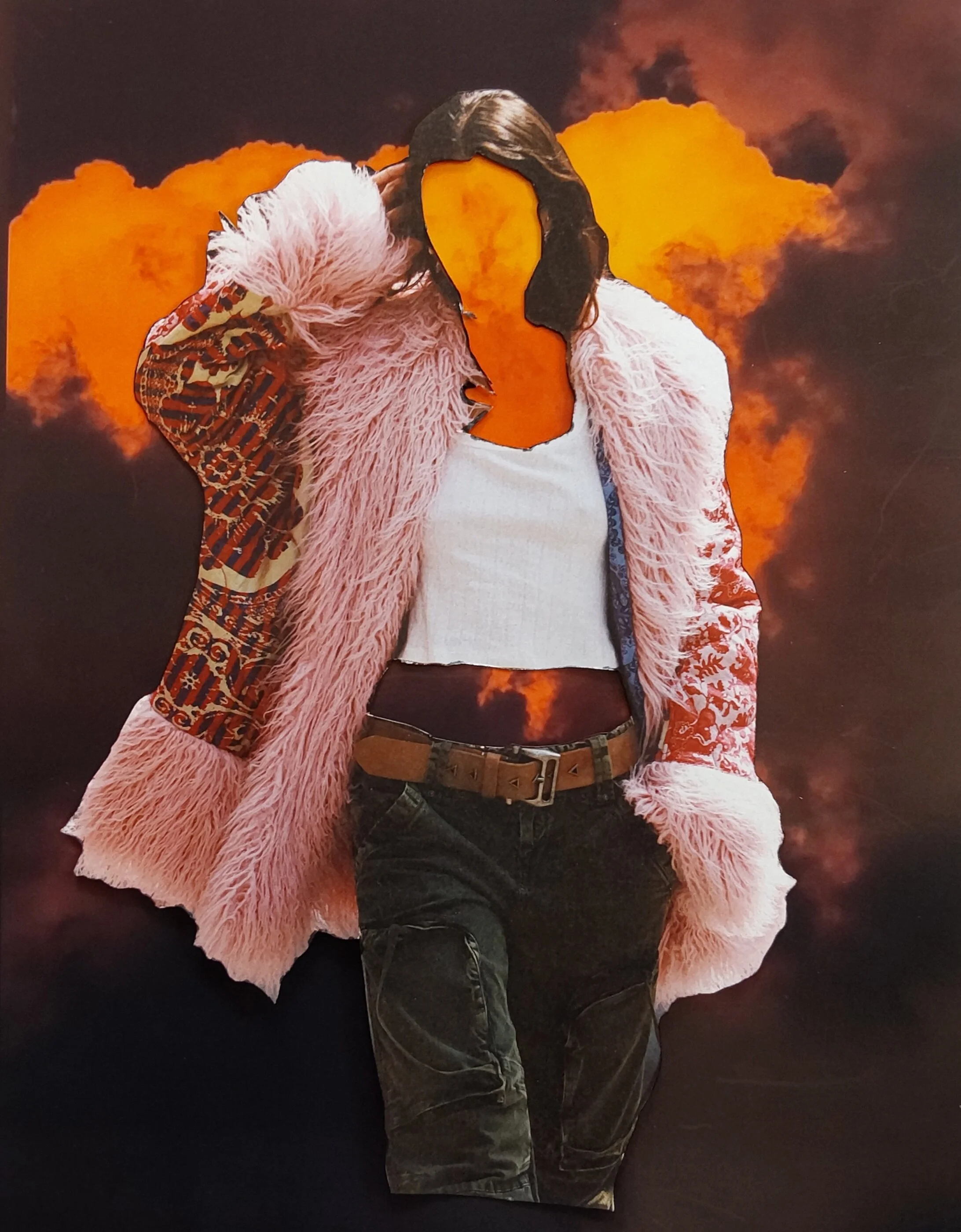Amelia Verlin: The Closer You Look, The More You See
Collage artist Amelia Verlin finds inspiration all around her. Verlin’s multi-layered, hand cut paper collages are made up a variety of materials such as Japanese paper, photos, and pages from old books arranged to create Surrealist, imaginative scenes.
How did your creative journey begin?
I have always been interested in art. I grew up in New York and if I was to cut school it was so I could spend the day at the Metropolitan Museum of Art. I knew the galleries there as well as anyone. I learned about paper and collage early from a couple of artists who took me under their wing but didn't take it up seriously then. I've always felt a need to be creative and was always up to something. The fascination with paper - Japanese, Italian, Brazilian, French marbles, Thai, Indian - never left me and, as time allowed, rekindled my interest in working in collage. And then discovering the translucent Japanese sanwa paper and unlimited glazes took it a step further. Working on the collages brings me a satisfaction that nothing else does. I always have works in progress and am always aware of the materials I have in stock, often times for years, for when the next inspiration strikes, that unique match of subject and material. Art books inspire me, the masters old and new. "Coffee table" books are often to be found in my lap. And old Audubon books from which I can cut an illustration or lift a gel are in my house too. Inspiration can come from anywhere, anything that might catch my eye. Some of my works are full but not congested. The closer you look the more you see. Others might be constructed of only several pieces, but they can convey a feeling. Once I was introduced to papers, collage and technique I knew it was a media I wanted to work in, and I knew that inspiration could be found all around me.
Where do you find inspiration for your work?
Inspiration can come from anywhere – a color, an image, Old Hollywood, nature, clouds, Old Masters, a memory. Simply browsing through my inventory of many years’ worth of interesting clippings and finding some that seem to call out to each other can inspire a composition.
How has your work evolved over the last few years?
My work was once reserved only for family and friends, and that has definitely changed. I think I’ve become more at ease with simpler compositions. I once heard an older, celebrated jazz saxophone player, after listening to a virtuoso performance by a young sax phenom, say, “One day he’ll learn to play fewer notes.” I think I’ve become comfortable with playing fewer notes.
What does a typical day in the studio look like for you, and how has your art practice grown or changed?
I usually have a number of works in progress, but it seems there’s always a primary one than has drawn the largest part of my attention, and I’ll stick with that one until all hurdles are cleared and I’m pleased with the result. At every turn of composition, I’m asking is it pleasing (to me), is it right, could it be better, is there imperfection as there in life? I can certainly come to an impasse and this primary project will become a secondary project for a while until an idea about a solution comes to me. A work could have 125 hand cut pieces or five. It could take twenty revisions or be finished on the first take. How close is it to the picture I started with in my head?
Which experiences have impacted your work as an artist?
Life experiences, moments of personal growth, travel for sure. I try to live in gratitude and happiness every day. And I’m sure I live in a world where there are fairies under mushrooms, because they keep showing up in my work.
How has social media impacted your work?
I believe it has had a large impact. To be able to see, every day, what new things people are up to no matter what media they are working in, is exciting and educational, and to have others comment on your work is almost impossible without social media It was once a much smaller world.
How do your materials inform your work?
They are my work. I can look at a piece of paper and see it in a different setting, bringing out some interesting quality in an image I’ve previously cut out. I once drove from south Florida to Atlanta because a Japanese paper importer there told he had a (single) piece of paper I would love. Yoshi was right, and I had it four years before I found the right project for it.
Instagram: @averlin75_







